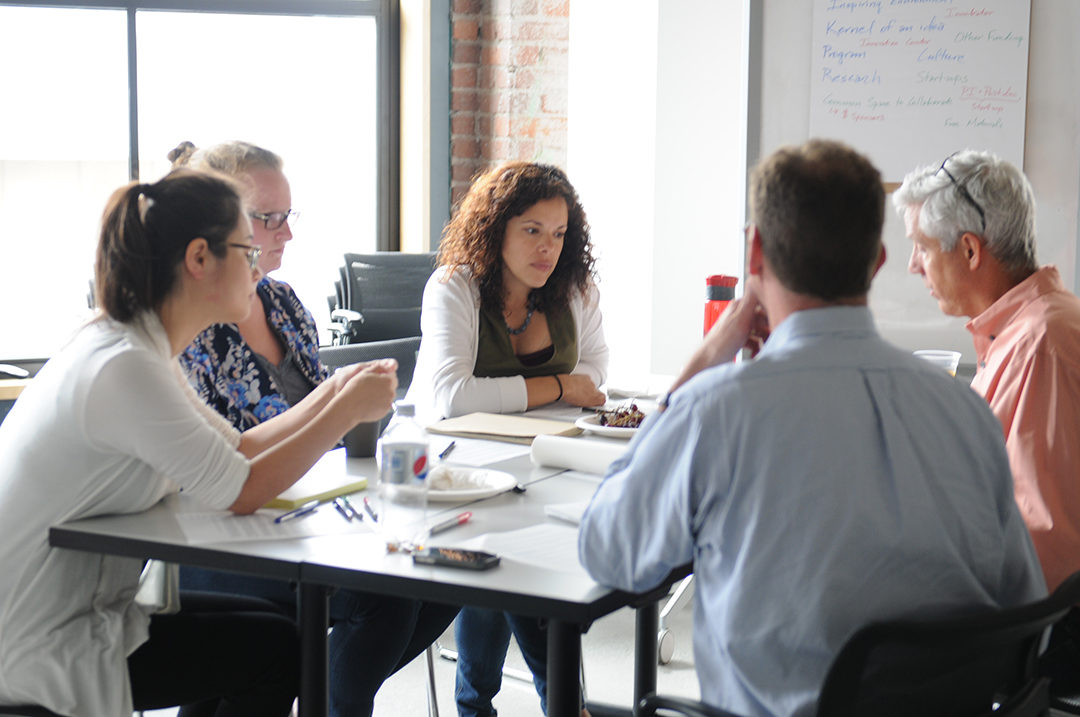A post occupancy process is a great way to inform your design practice. It’s a process in which a designer revisits a project after it has been occupied. Generally, I like to revisit a project after a year of occupancy. That gives the occupants – employees, students, etc. – plenty of time to have settled in to their space. Additionally, a year of occupancy means we can look at operational data of the building and by that point, the building is operating (more or less) as it was intended.

The typical Post Occupancy Evaluation (POE) at PAYETTE has two phases: the survey and the interview. The order in which they occur varies project to project. Either can inform the other and sometimes the client’s schedule dictates which comes first.
The online survey aims to anonymously gather data about the building from those who work in it. While each survey is tailored to a particular building, its occupants and owner, establishing a consistent line of questioning that can be used on multiple projects provides data that can be compared across all of the project you may survey – this way we can see trends more clearly and understand the comparative function of systems that create a comfortable environment. It is a more subjective way to gather data.

The interview is a deep dive into the daily lives of the building occupants. Because it is a face-to-face experience, it can be challenging to get honest, clear responses. It’s one thing for someone to tell you they love, or hate the building in an online survey, it’s another when you are in the room asking questions. It’s primarily a listening exercise that requires consideration. I’ve been doing POEs at PAYETTE for 8 years and I have some tried and true methods to make the most of the POE interview.

If you know who will attend the interview, do your homework. Get a sense of their work and try to learn if they were involved in the design process. And, relax.

You don’t know how the subjects will respond. They will surprise you. Be neutral even though design challenges may have arisen in meetings with the design team.

For me, the big three priorities are:
- Learn from the experience and work of occupants;
- Inform the practice of architecture;
- Provide feedback to the owner for their use in future planning and development.

Stay away from yes or no questions. Start by asking what the interviewee does in the building, or ask “How have your processes evolved since you have been working here?

On occasion, users will share their dislikes and will look to you for a response. When negative aspects arise try the following three E’s
- Echo your interviewee’s frustration – “You’re saying you don’t like…”
- Explore the problem – “What is it about the design that seems to be problematic?”
- Explain the issue – Don’t be dismissive of the problem. Don’t engage in a discussion of how the project “should have” been done. Do attempt to inform your subject on the nature of codes and regulations that may have resulted in the design response. Do explain the place of this particular building and its programmatic elements in the larger plan or institutional context.

The interview process can be fascinating. Depending on the number of people to interview and subject matter, these meetings can go longer than intended. Be sure to communicate the time available, and that you, the interviewer, would be available to speak more on the subject later. Be conscious of the time and provide a reminder: “…we have ten minutes left, are there any important things you would like me to capture?”

if you said you were going to – make sure you do! Once the survey is complete and interviews are documented, be sure to provide this information back to the design team and the client. It’s valuable information.
The information gathered in the post occupancy process is an important gauge of how a building meets design criteria set in the early design stage. The online survey is a great tool for gathering performance data; the interview assists in understanding the story behind the data. The story revealed by a POE is valuable to architects and designers as it highlights the impact of design choices and facilitates the evolution of the practice.


